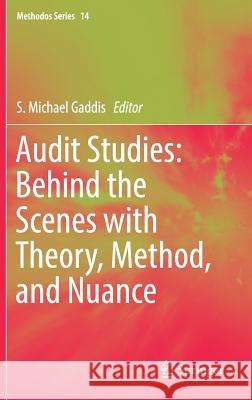Audit Studies: Behind the Scenes with Theory, Method, and Nuance » książka
topmenu
Audit Studies: Behind the Scenes with Theory, Method, and Nuance
ISBN-13: 9783319711522 / Angielski / Twarda / 2018 / 198 str.
Kategorie:
Kategorie BISAC:
Wydawca:
Springer
Seria wydawnicza:
Język:
Angielski
ISBN-13:
9783319711522
Rok wydania:
2018
Wydanie:
2018
Numer serii:
000303882
Ilość stron:
198
Waga:
0.46 kg
Wymiary:
23.39 x 15.6 x 1.27
Oprawa:
Twarda
Wolumenów:
01











